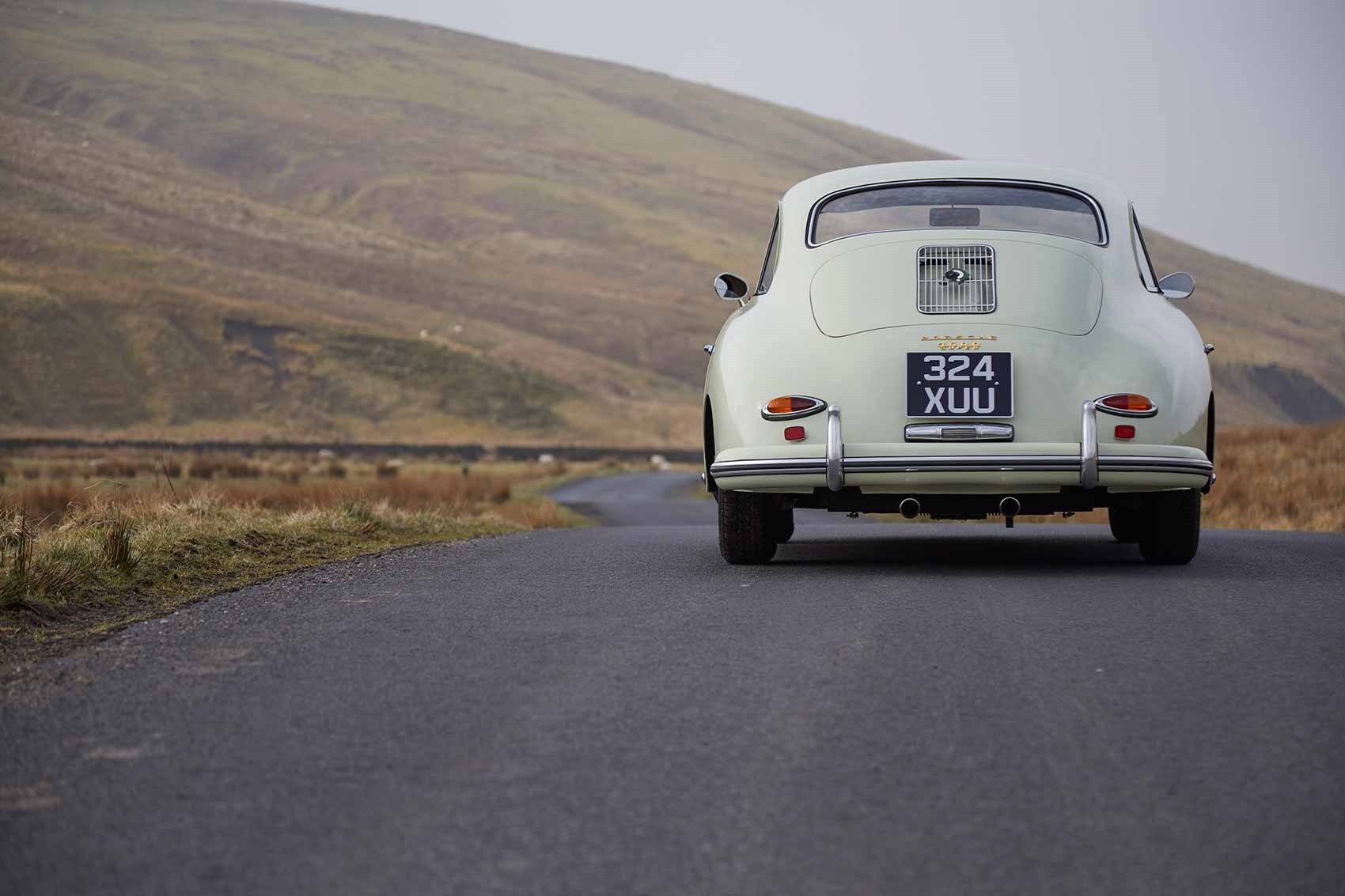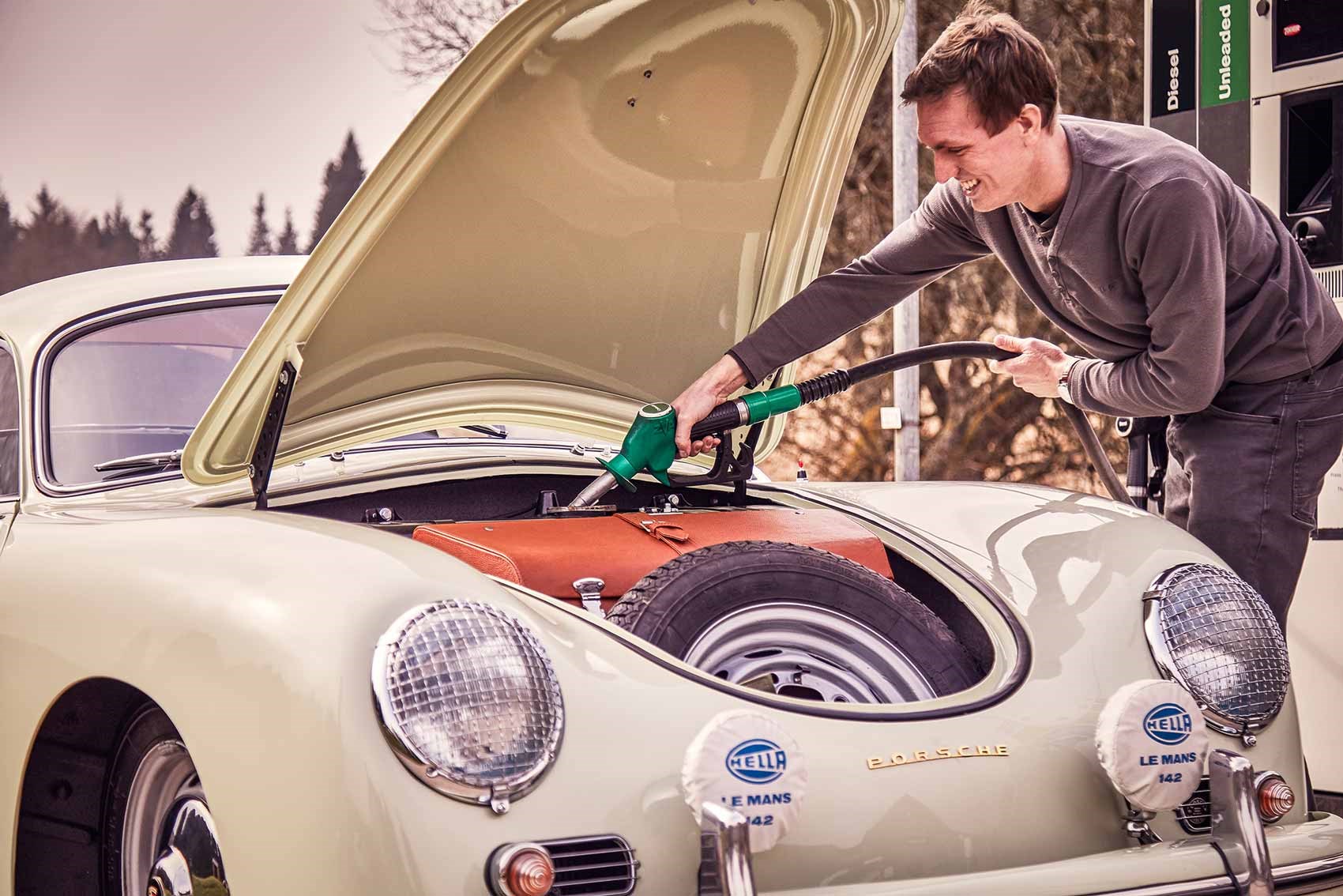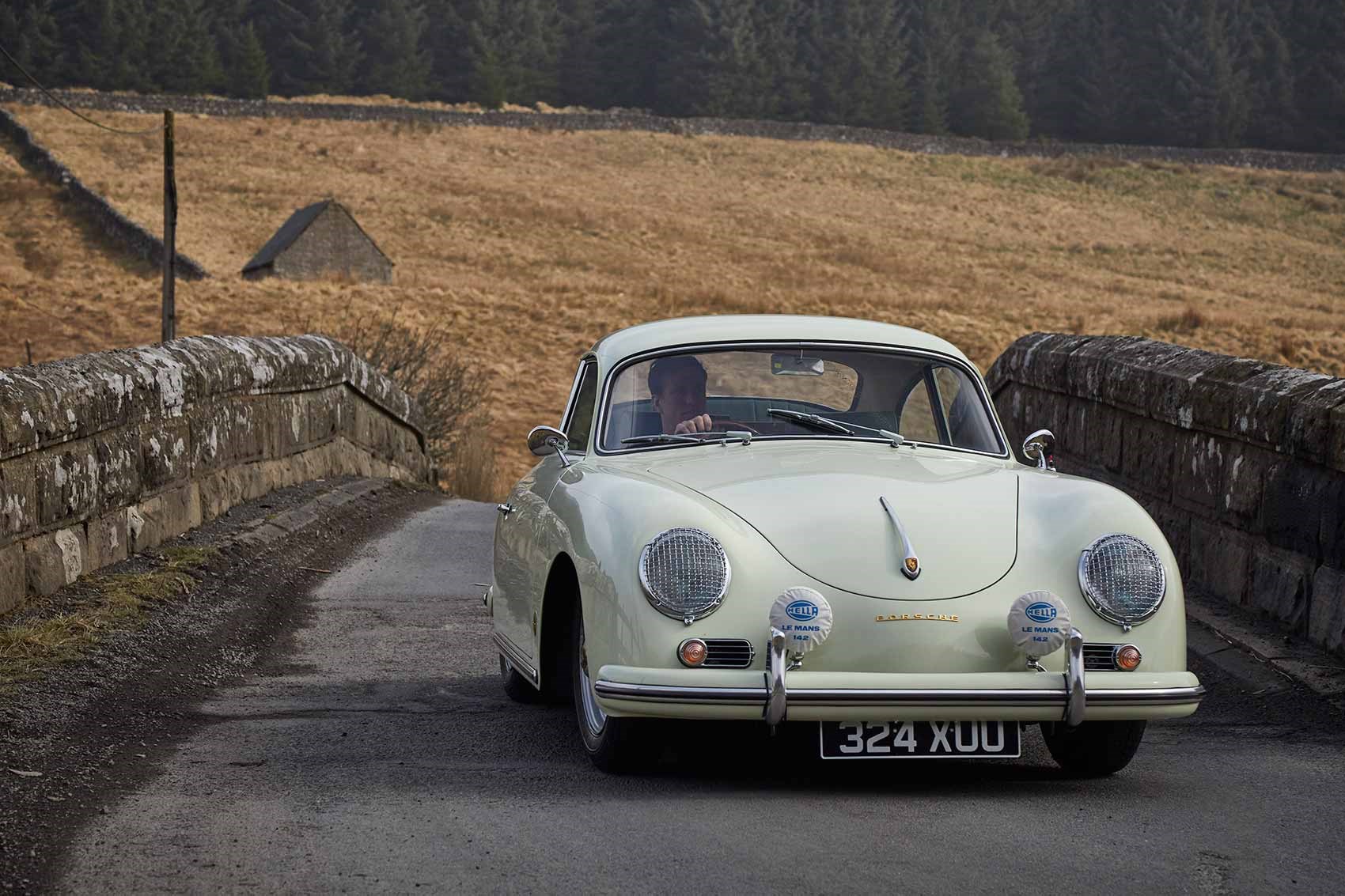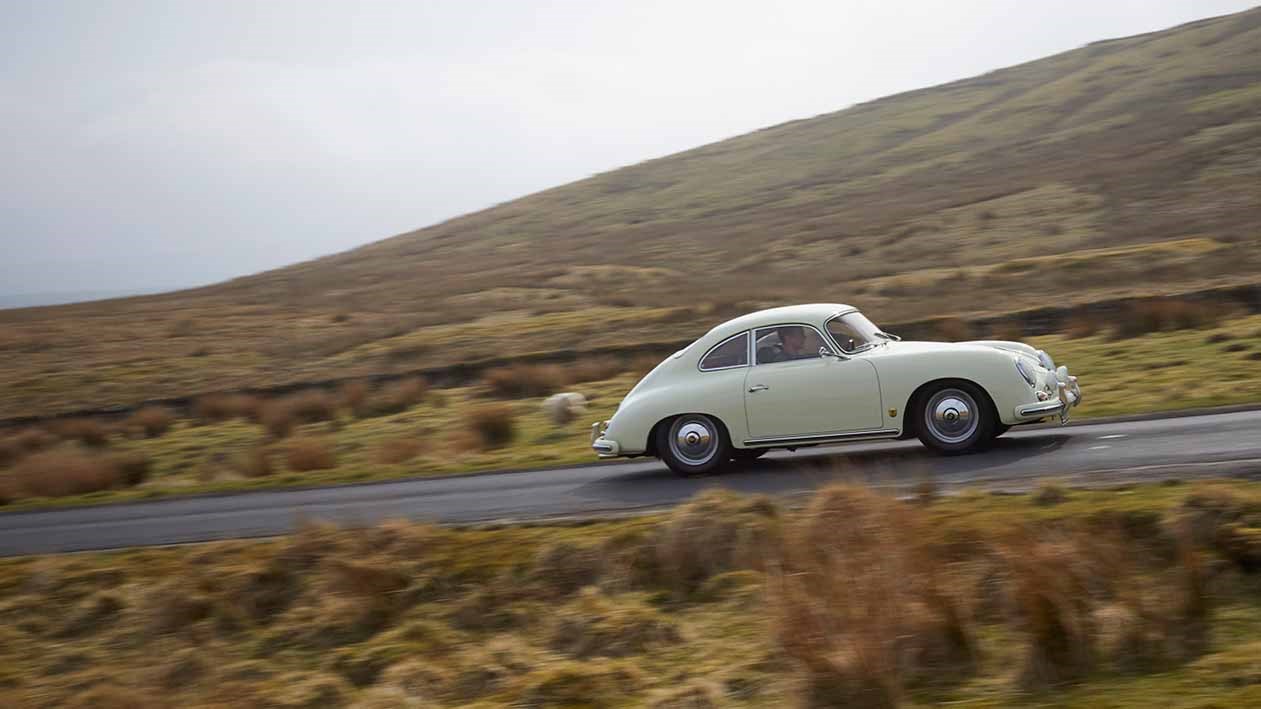► Classic Porsche 356 A review
► Where the sports car story began
► Driving the 1958 landmark coupe
Why do people get so passionate about Porsches? Could be the seven decades of heritage, or the rock-solid engineering, the instantly recognisable styling, or the reinforced trophy cabinets groaning under the weight of all those Le Mans wins. But above all, it’s how the cars feel to drive. The company may make the bulk of its revenue from SUVs these days, but they still handle like cars half their height. And when the electric Porsches on the drawing boards and CAD screens in Stuttgart reach showrooms, you’d put money on them still driving like proper Porsches, too.
Like many great marques – Ferrari and Enzo, Lotus and Chapman – Porsche was built by the passion of one man; or in this case, one family. And the story really gets going with the 356 in 1948. This was Porsche-the-company’s first proper production car, masterminded by Ferdinand Porsche’s son Ferry. It was funded partly via licence fees from sales of the Ferdinand Porsche-designed Volkswagen Type 60 – better known as the Beetle – and remained in production until 1965, two years after the 911’s arrival.
Check out our undisguised spyshots of the new 992-generation Porsche 911

The Beetle genes are evident in the 356’s rear-mounted, air-cooled boxer engine and torsion-bar suspension, and early versions borrowed a few other Beetle bits, too. A, B and C upgrades refined the 356 throughout its life, as power climbed from 40 to 95bhp. This car is a 1958 356A. Among the headline changes when the A launched in 1955 were a curved windscreen in place of a split screen, the availability of a bigger 1600cc engine, and various suspension and interior upgrades.
Porsche 356 review: we drive a RHD example
This one’s a particularly rare brew: it was originally exported to Australia, making it a sought-after right-hand-drive 356. The colour was specially mixed for Oz, a gorgeous not-quite-green, not-quite-cream hue, like a cup of peppermint tea someone’s accidentally poured milk into.
Showing just 7000 miles from new and fresh from a mechanical and body restoration co-ordinated by Porsche Centre Leeds, it’s properly mint too, as if it’s driven through a convenient tear in the space-time fabric from Zuffenhausen in 1958 straight to a quiet road near Kielder Forest, 2018.

Inside, it’s a retrophile’s dream. If classic-style fridges, toasters and radios are your thing, you’ll be in design heaven. The radio itself, a Blaupunkt with neat plastic switches, was another upgrade introduced for the 356A. I daren’t switch it on: if it were playing anything newer than Buddy Holly or the Everly Brothers the illusion would be shattered.
Interior: a two-seat cockpit
Like modern Porsches, quality feels top-drawer, and the details are lovely: the perforated headlining, the ultra-comfy springing system in the seats. And the smell… If you could bottle that aroma of leather, plastics and general essence-of-old-car, you would. The car’s previous owner also commissioned a set of tan leather luggage to match the sets originally available in the ’50s. Charming doesn’t begin to cover it.
Twist and pull the chromed choke lever outwards, turn the key and the engine putters into life and settles to a smooth, throbby idle. Another twist of a chromed handle releases the parking brake, buried far under the dash. You do a lot of stretching in a 356. The pedals are offset to the left, so you drive with your torso at 12 o’clock, your legs at 10 o’clock. Push the spongy, long-travel clutch into the floor, taking care not to catch the sole of your left shoe against your right – the pedals are close – tickle the throttle and pull away.

There’s such a long throw to the spindly gear lever it feels like you need to reach under the dash for first gear, and into the back seat for second. There’s a similar distance between each ratio – shift up too early and the engine begins to struggle. Time it right, though, and it’s immensely satisfying.
Browse all our Porsche reviews
Performance and handling
The more time you spend in a 356 and tune yourself into it, the more you fall under its spell. The steering is light, and surprisingly accurate. Some old cars demand you saw at the wheel like Sean Connery in that Dr No car chase, but the 356 goes exactly where you point it. The thin-rimmed wheel, big enough to almost skim the top of your thighs, gets heavier as a corner goes on, but remains full of feel.
Does a Porsche 356 feel fast today? Not so much. Rumour has it Steve McQueen fitted a foot switch to his 356 to kill the number plate lights so the police couldn’t identify him hustling the car around the hills at night, but a modern police car could probably read the 356’s chassis number by torchlight without breaking a sweat. Hills are a challenge. You need to anticipate them to make the most of the 59bhp available, and you might have to resort to first gear for particularly steep climbs – remembering that there’s no synchromesh on first, so you must first be stationary to select it.

Long-winded gearshift apart, all the touch-points feel great. Even the window winders feel slick, and the brackets, hinges and shutlines appear almost at the standard of a modern car when you lift the bonnet to fill the front-mounted tank. (It’s best to use regular unleaded – it’s better quality than the fuel it sipped in period, and if you fill up on super you might get flames from the exhausts…)
Verdict
Jump behind the wheel of a Porsche 356 and you can absolutely see and feel the very special DNA still at play in Porsches today, and not just the 911. The Porsche road car story started here, and – thankfully – the 356’s influence shows no sign of waning any time soon.
With thanks to the Porsche Classic Partner, Porsche Centre Leeds for the use of the 356